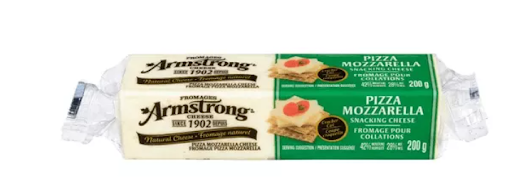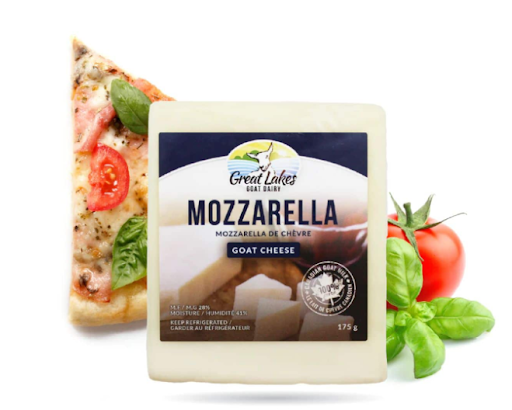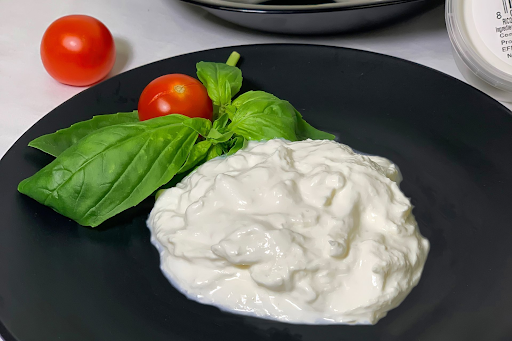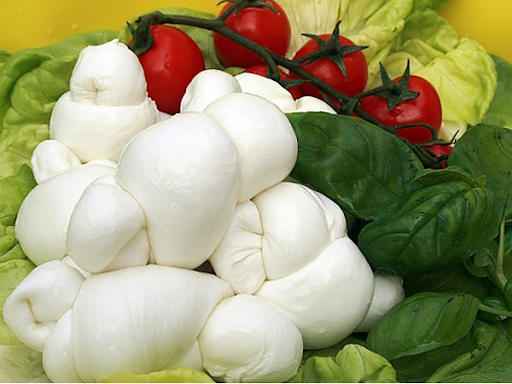Fresh Mozzarella Cheese, How It’s Made and All the Ways to Enjoy It
Who doesn’t love a generous serving of fresh mozzarella cheese, no matter the time, place or meal? Not only is it delicious, but it is also so versatile that it can be used in countless foods, whether sweet or savoury. On top of that, there are loads of mozzarella types to choose from, such as buffalo mozzarella, fior di latte, and so on.
Join Dessert Advisor to find out what defines this cheese, how it’s made, its different types and uses, and to learn the many advantages of buying locally. Keep reading!
What Is Mozzarella?
First things first, let’s discover what sets this cheese apart from the others. Mozzarella originates from southern Italy and is traditionally made, though not exclusively, from Italian buffalo’s milk by the pasta filata method. The result is a soft, creamy and mild-flavoured cheese. In order to let its subtle and fresh flavour bloom, it should be eaten at room temperature. Fresh mozzarella is easily found in supermarkets and specialty stores.
Fresh mozzarella is typically white. However, if seasoned, it turns light yellow, depending on the animal’s diet. Also, due to its high moisture content, it’s best to serve it the day after it’s made. That being said, it can be kept in brine for up to a week or even longer if sold in vacuum-sealed packages. Low-moisture mozzarella can be refrigerated for up to a month, and some kinds of shredded low-moisture mozzarella have a shelf life of up to six months.

Armstrong Pizza Mozzarella Cheese (Northmart)
How Mozzarella Is Made?
No matter the type of milk used, mozzarella cheese is made the same way. As mentioned above, the method of making mozzarella is called pasta filata. This is an elaborate process of curdling milk and afterwards, heating the curds until they form strings and acquire a fibrous texture. At that point, they are stretched and kneaded until smooth, then formed into round balls, and there you go! No need to age it, it’s best to eat it within hours of its making.
Different Types
What makes the biggest difference in mozzarella is the milk used to make it. Let’s take a look at its different types in greater detail.
- Buffalo mozzarella: This cheese is produced all over Italy using buffalo’s milk under the government’s official name, “mozzarella di latte di bufala”. This is because Italian buffalo are present in all regions of Italy. There is also “mozzarella di bufala campana”, which is made from the milk of Italian buffalo raised in designated areas of Campania, Lazio, Apulia, and Molise. This kind has a special label: PDO (protected designation of origin), unlike other mozzarellas, of which 50% of the production often comes from non-Italian milk. Buffalo mozzarella has a tangier and sweeter flavour than fior di latte mozzarella. Thanks to its creaminess, it’s an ideal pizza topping but is just as good served on its own.
 Water buffalo mozzarella (The Cheesemongers Fromagerie)
Water buffalo mozzarella (The Cheesemongers Fromagerie)
- Cow’s milk: The most widespread and classic variety, “fior di latte”, is made from fresh pasteurized or unpasteurized cow milk, and not buffalo milk, which greatly lowers its price. It has a sweet, light, and delicate flavour with an elastic texture. You can find smoked mozzarella made with cow’s milk, called “mozzarella affumicata”. There is also “ciliegine”, a traditional Italian mozzarella consisting of small white cheese balls, made with pasteurized cow’s milk or sometimes with water buffalo’s milk.
- Sheep’s milk: Sometimes called “mozzarella pecorella”, this cheese is typical of Sardinia, Abruzzo, and Lazio, where it is also called “mozzapecora”. Its recipe also calls for the addition of lamb rennet.

Goat cheese mozzarella (Bothwell Cheese Shop)
-
Goat’s milk: Goat milk mozzarella only appeared recently, and its producers are still few. You’ll find goat cheese’s typical flavour, which is stronger and more sour compared to the other kinds.
The mozzarella cheese family goes beyond different animals’ milk. Here are some other types you can enjoy:
 Stracciatella cheese (Fine Dining Lovers)
Stracciatella cheese (Fine Dining Lovers)
- Stracciatella: This variety is unbelievably soft and creamy. Its name comes from the Italian word “straccia”, meaning “rag” or “shred”. Stracciatella is made with shreds of mozzarella curds and fresh cream. It’s great for spreading on bread or in pasta. You can’t go wrong with this kind of cheese!
 Burrata (Fromagerie Hamel)
Burrata (Fromagerie Hamel)
-
Burrata: You could describe this variety as a pouch of fresh mozzarella cheese filled with creamy stracciatella. While still a mozzarella, burrata is much richer and creamier and has a looser texture. The moment when you first cut the pouch open to spread the creamy inside all over a pizza or salad is simply divine. To enjoy it further, sprinkle burrata with sea salt and some olive oil.
 Nodini (dal Molise)
Nodini (dal Molise)
-
Nodini: Formed by tying mozzarella into knots, this twist on mozzarella has a smooth and shiny surface and a firm texture. The elegant shape of these little knots makes for a great presentation at gatherings!
Different Ways to Enjoy Mozzarella
It goes without saying that mozzarella is a fantastic addition to pizza, pasta, salads and any savoury meal that can be boosted with creamy cheese. But did you know that you can also use this cheese in wonderful sweet treats? Here are some ideas you can try:
-
Sweet Caprese Salad: A twist on the classic Caprese salad, this version combines fresh mozzarella cheese with ripe strawberries, basil leaves, and a drizzle of balsamic glaze or honey. The combination of sweet fruit, fragrant herbs, and creamy mozzarella creates a unique and refreshing dessert.

Cannolis (Café les cousins)
-
Cannoli: While traditional cannoli shells are filled with sweetened ricotta cheese, some variations use a combination of ricotta and mozzarella. The mozzarella adds a subtle tanginess and creaminess to the filling, complementing the sweet flavours of the shell and any added ingredients like chocolate chips or candied fruit.
-
Mozzarella-Stuffed Pastries: Mozzarella can be used as a surprise filling in sweet pastries like turnovers or stuffed buns. The melted mozzarella adds a gooey and savoury element to the sweet pastry, creating a unique flavour and texture contrast.
-
Mozzarella Cheesecake: Mozzarella can be incorporated into cheesecake recipes as a variation to the traditional cream cheese base. The result is a lighter and slightly tangier cheesecake with a unique twist.
It’s worth noting that mozzarella has a mild flavour and a higher moisture content compared to other cheeses used in desserts. Therefore, it may not be the go-to choice for most sweet recipes. However, for those willing to experiment with flavours and textures, using mozzarella in desserts can lead to interesting and unexpected combinations.
Buying Local and Supporting Small Producers
Have you ever heard of the film “Mozzarella Stories”? It’s a rather unknown Italian film, released in 2011, that takes you through the hardships of Ciccio Dop, a cheese producer in the south of Italy. Dop has enjoyed many years as the “king of mozzarella”, dominating the industry in the region of his home country. That is until a Chinese competitor shows up in town. The Chinese-made mozzarella is not only of great quality but also mass-produced and significantly cheaper. This poses a grave danger to the local artisan’s business, who will do all he can to sabotage his competitor’s industrial cheese and save his own business.
Unfortunately this situation happens quite frequently all over the world: artisans who make their products by hand, using local ingredients and living their passion often cannot compete with large multinational brands, who offer industrially-made products for a vastly cheaper price. But as a consumer, what reasons would you have to buy locally and support small producers?
According to the city of Montreal, there are many advantages (which apply no matter where you live, of course):
-
Save time: Opting to shop from nearby stores allows you to minimize commuting time. Certain vendors even provide bicycle delivery, which not only is more efficient than conventional methods but also better aligns with environmentally conscious practices.
-
Specialties: Local business owners have in-depth knowledge about their products. Whether it’s a neighbourhood hardware store or a fashion designer’s workshop, you have the opportunity to connect with industry experts willing to share their knowledge with you, provide valuable advice, and adapt their offerings to better meet your needs.
-
The environment: Local businesses usually obtain their supplies from nearby producers. As a result, what they offer travels a shorter distance to reach the consumer. These products typically require less packaging, which in turn minimizes their environmental footprint.
-
Fostering the vitality of our neighbourhoods, and the personal touch: Local purchasing enables an entire network of economic activity, from producers to merchants to distributors, all of whom employ local workers and contribute to public services through taxes. The money spent circulates back to the community, either directly or indirectly, providing a boost to the local economy. Regular customers can enjoy personalized service from merchants, while the bonds of trust and loyalty formed can be invaluable for local businesses during challenging periods.
This blog definitely got us in the mood for some creamy, soft and fresh mozzarella cheese! And with all the varieties and uses for it, there are endless ways to enjoy it! Head over to Dessert Advisor now to find the best mozzarella near you.




